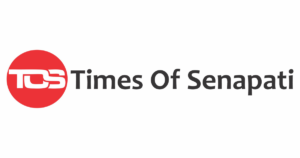NEW DELHI, Feb 3: Ahead of World Cancer Day, the World Health Organization (WHO) has raised concerns about a significant rise in cancer cases and deaths in the South-East Asia region. According to WHO projections, by 2050, the region will experience an 85 percent increase in the number of new cancer cases and deaths.
In 2022, the WHO South-East Asia Region reported 2.4 million new cancer cases, including 56,000 children, and 1.5 million cancer-related deaths. Among all WHO regions, the South-East Asia Region recorded the highest number of cancers in the lips and oral cavity, uterine cervix, and childhood cancers.
Saima Wazed, WHO’s Regional Director for South-East Asia, highlighted that the theme for this year’s World Cancer Day, “United by Unique,” emphasizes collective commitment against cancer. “WHO acknowledges every patient’s unique experiences and the value of people-centered care delivered jointly by healthcare providers, families, friends, and community,” Wazed said.

The WHO also commended the progress made by several countries in the region in recent years. One major achievement is a significant reduction in tobacco consumption, which is a major risk factor for many high-burden cancers. The region has seen the fastest rate of decline in tobacco use.
Moreover, six countries in the region have established national plans for cancer control, while two have included cancer in their national non-communicable disease (NCD) plans to guide prevention and control activities. Eight countries have launched nationwide Human Papillomavirus (HPV) vaccination programs, and 10 countries are implementing global initiatives for childhood cancer. Seven countries now have operational population-based cancer registries, and tertiary level cancer care is available in 10 countries, covering at least 50 percent of patients in need.
Despite these advancements, challenges persist. The WHO pointed out that cancer control efforts remain scattered, with national cancer control programs often not fully aligned with evidence or best practices, resulting in ineffective implementation. Additionally, policies and guidelines on controlling cancer-causing agents, such as the areca nut, are lacking. Furthermore, cancer prevention policies are not fully implemented, leading to millions of avoidable cases. Late diagnoses and insufficient national capacities to handle the increasing cancer burden also present significant obstacles to progress.

